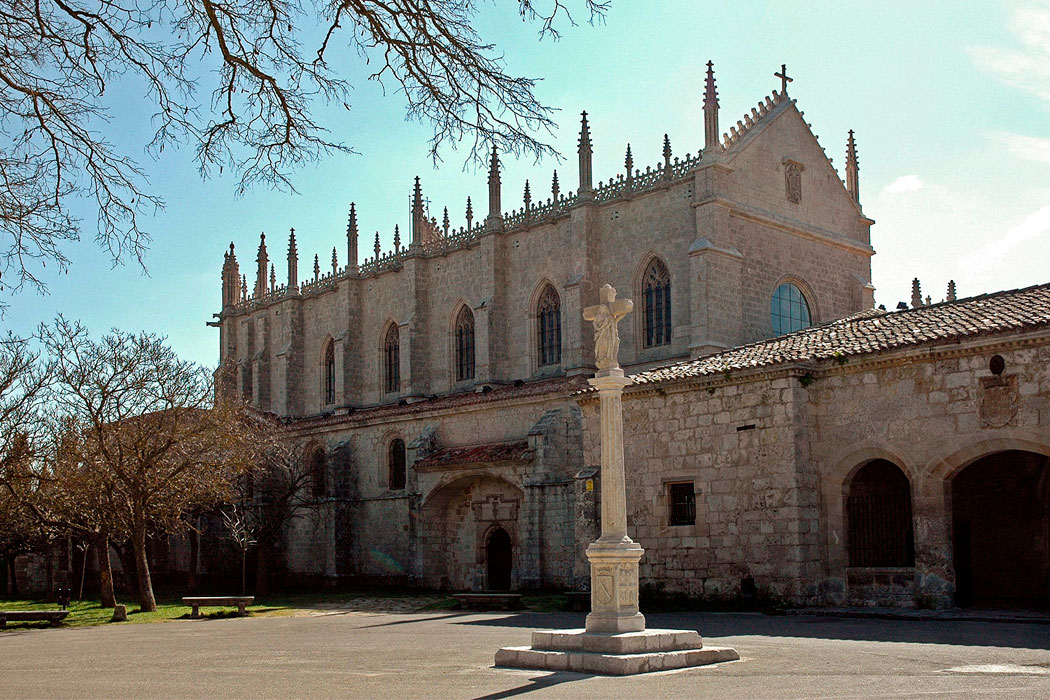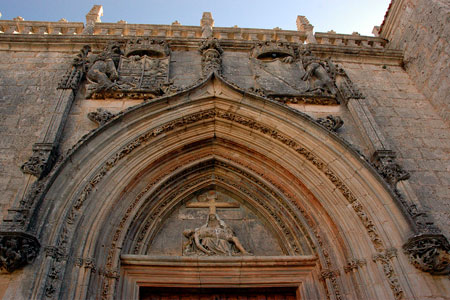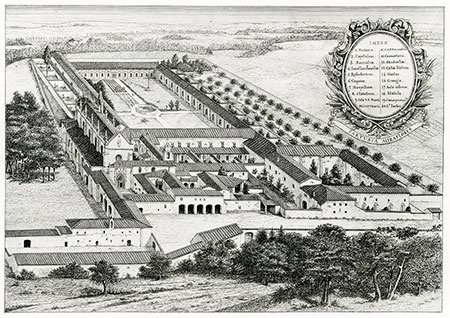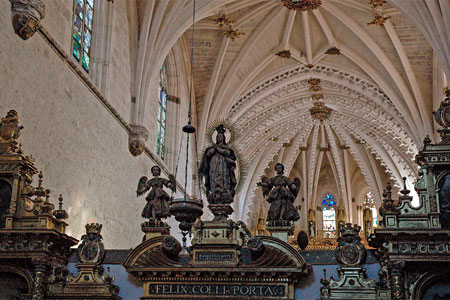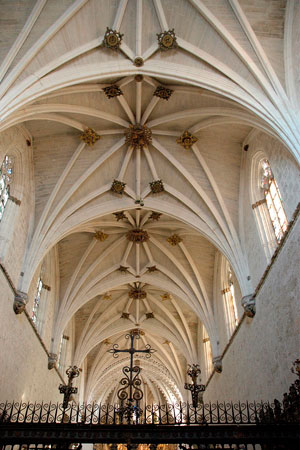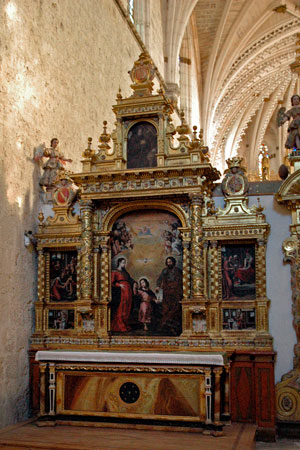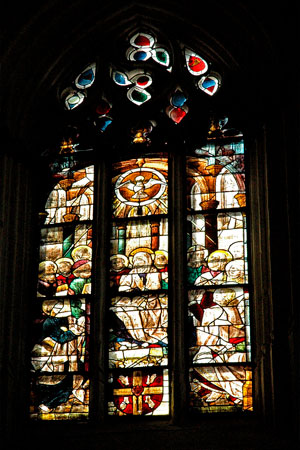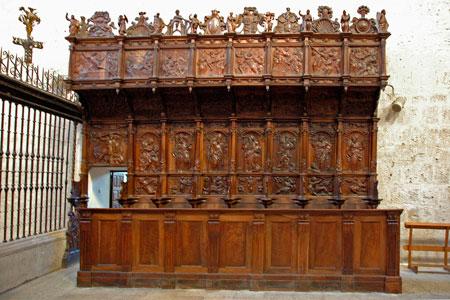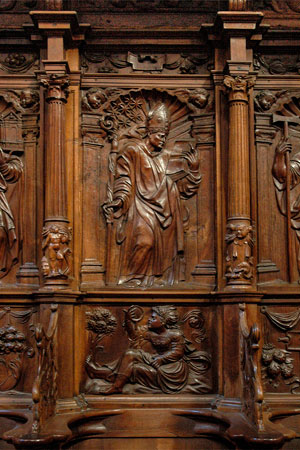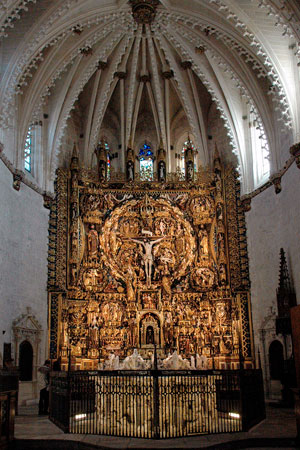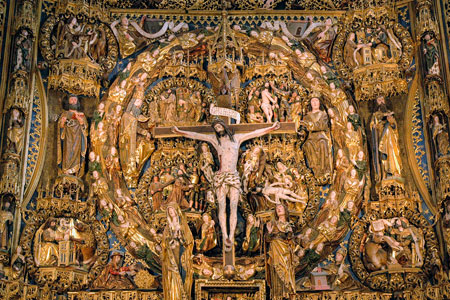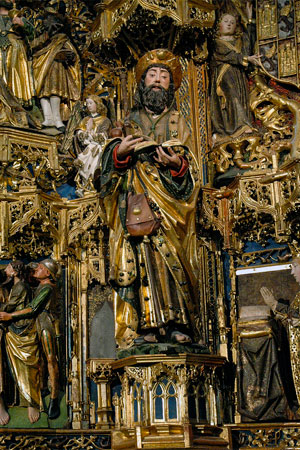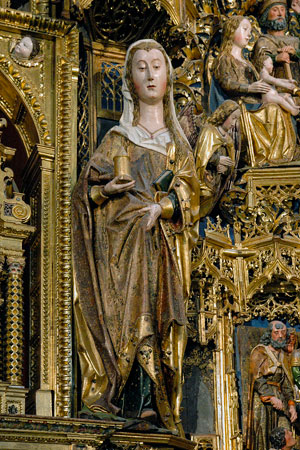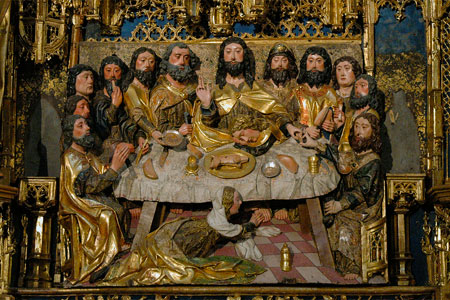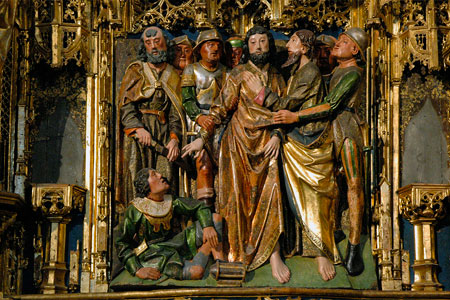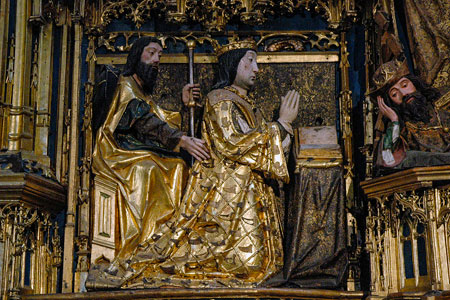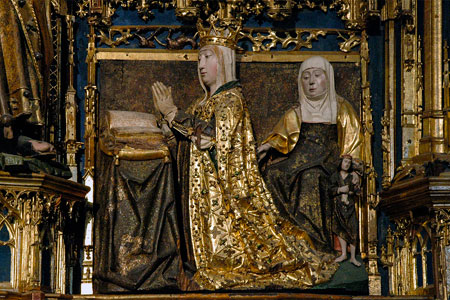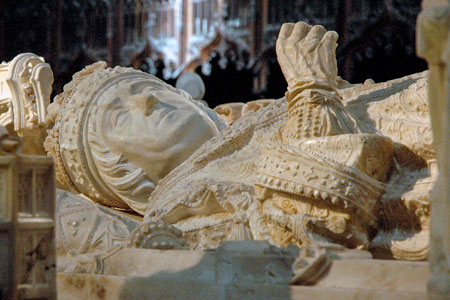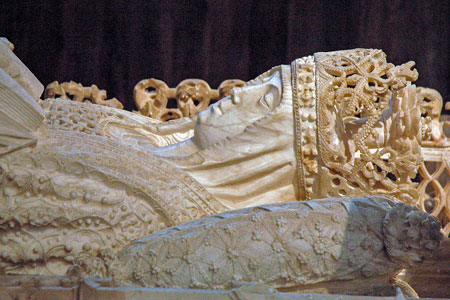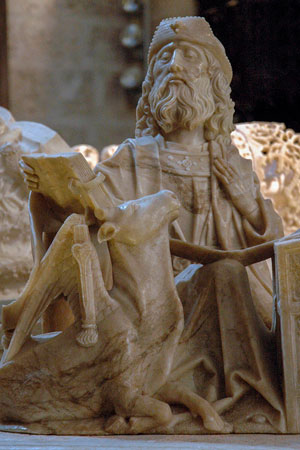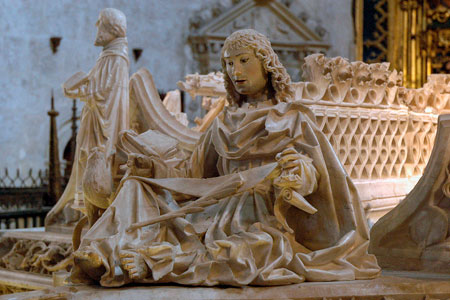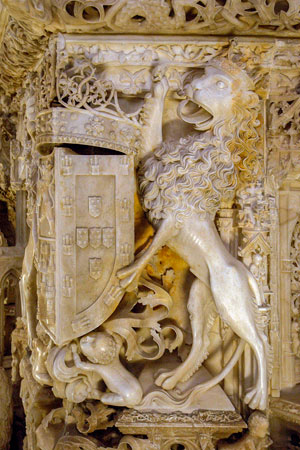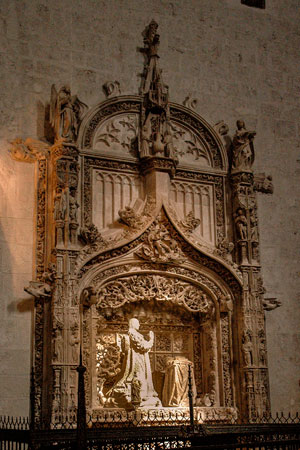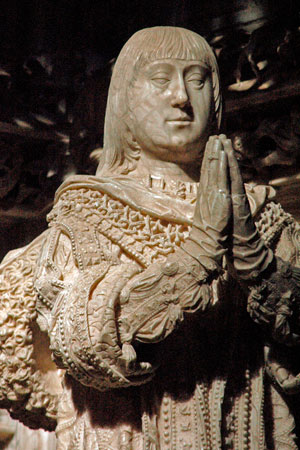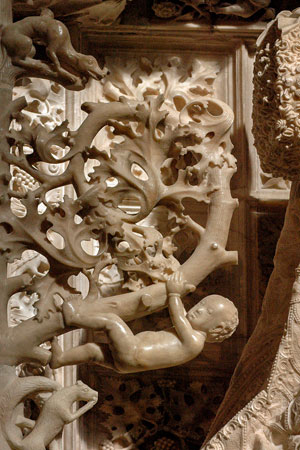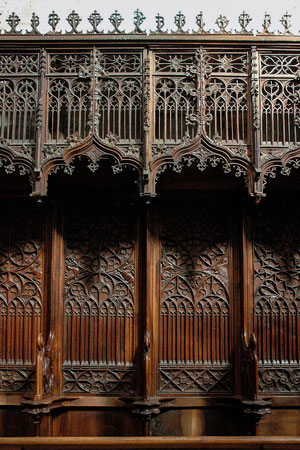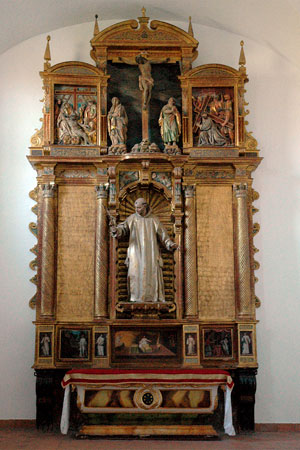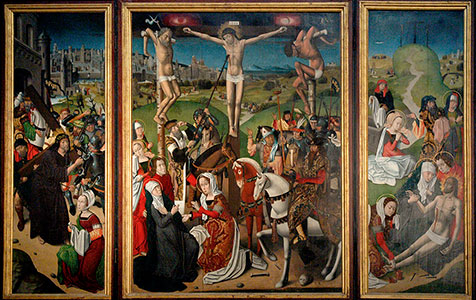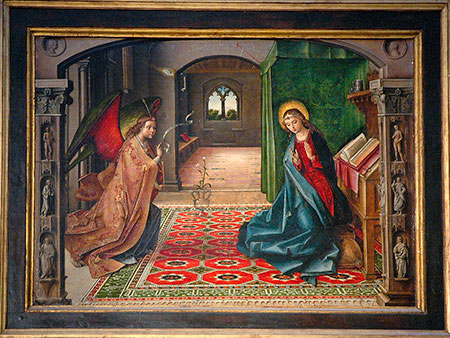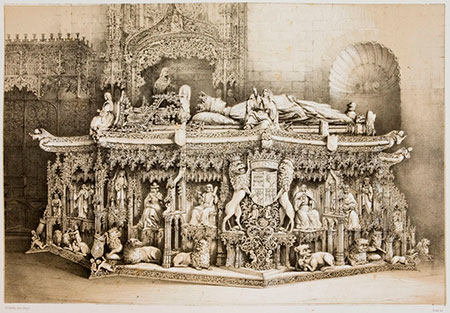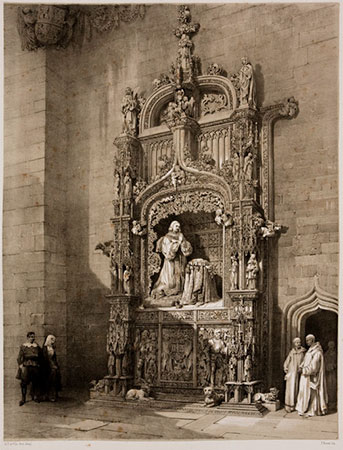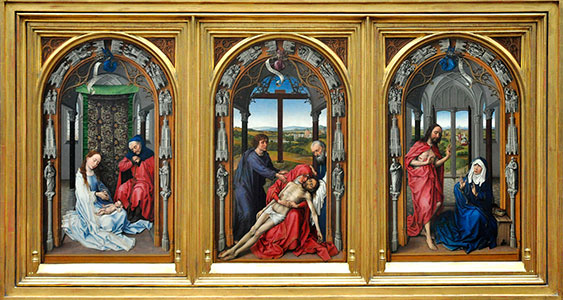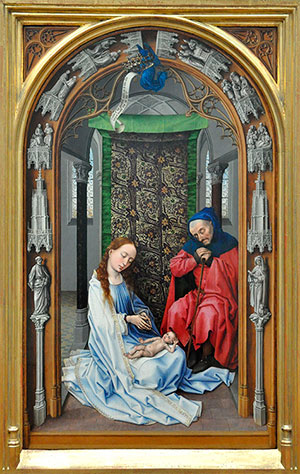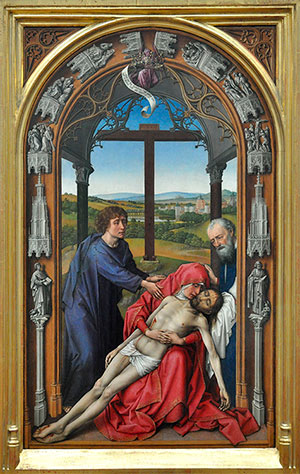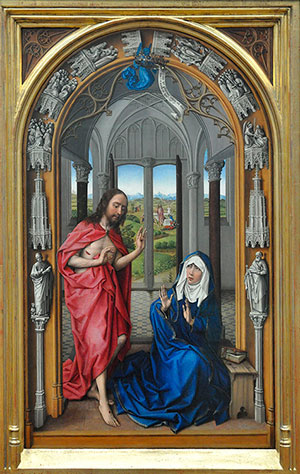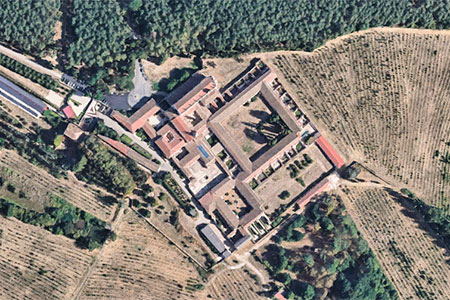Miraflores is a late-founded Carthusian monastery, if we take into account that the arrival of this order in the Peninsula began in 1194 with its establishment in Escaladei (Priorat). In this place near the city of Burgos, there was a palace that Henry III of Castile (1390-1406) had ordered to be built. His son, John II (1406-1454), only partly fulfilling Henry III 's wish to establish a Franciscan monastery, gave it to the Carthusians, but he placed it under the patronage of Saint Francis, which was unusual for this order.
In 1441, John II obtained the corresponding consent of the Carthusian monks, both from the prior of the Grande Chartreuse (Isère) and from the establishments of Escaladei and El Paular (Rascafría, Madrid). In 1452, the palace converted into a Carthusian monastery was completely lost due to a fire and had to be rebuilt from top to bottom, at which time the initial dedication to the Virgin was changed and the monastery was renamed Santa María de Miraflores. The construction of the monastic complex was delayed due to various obstacles and was completed under the patronage of Isabella I of Castile, who finished the construction that had begun in 1453, during the reign of John II.
The architect in charge of that work was Juan de Colonia, best known for his work on Burgos Cathedral, who designed a monastery with a Carthusian structure, with a church reserved for the community, some common rooms and the cells distributed around a large cloister. Carthusian life was interrupted several times in the 19th century, in different exclaustrations, between 1808-14, 1820-23 during the “Trienio Liberal” and between 1835 and 1880. In the latter period, the Carthusian monks took refuge in France while the site came under the custody of the bishopric of Burgos, which maintained a small community there to ensure its conservation until 1880, when the Carthusian monks returned to restore monastic life to the centre, which is still active today.
The monastic complex is made up of several outbuildings, but the very nature of the Carthusian order means that visits are rather limited. The reconstruction was begun by the architect Juan de Colonia and continued by Garci Fernández de Matienzo and Simón de Colonia. The furnishings are very rich; in the middle of the presbytery is the tomb of the founders: John II and Isabella of Portugal, by Gil de Siloé (1489-93), the main altarpiece (1496-99) is also the work of Gil de Siloé, and Diego de la Cruz.
The Gemäldegalerie in Berlin preserves an altarpiece from this charterhouse. It is a triptych dedicated to the Virgin known as the Miraflores Altarpiece. It depicts three scenes from the life of the Virgin Mary: the Nativity, the Pietà and the Appearance of Christ to the Virgin; the archivolts surrounding these representations feature other minor characters and scenes. It is considered to be the work of Rogier van der Weyden and can be dated to a little before 1445. The work was commissioned and given to the charterhouse by John II.
- ARIAS DE MIRANDA, Juan (1843). Apuntes históricos sobre la Cartuja de Miraflores de Burgos. Burgos: P. Polo
- ASSAS, Manuel de (1878). La cartuja de Miraflores, junto á Burgos. Monumentos arquitectónicos de España. Madrid: Fontanet
- B. de A. (1899). La cartuja de Miraflores. Burgos: S. Rodríguez
- CARTOIXA DE PARKMINSTER (1916). Maisons de l'ordre des Chartreux. Vol. III. Chartreuse de Saint-Hughes (Sussex)
- CORTÉS, Fernando (2021). La Cartuja de Miraflores, III. Las vidrieras. Madrid: Fund. Iberdrola
- HUIDOBRO, Luciano (1935). El antiguo palacio real de Miraflores. Boletín de la Comisión Provincial de Monumentos Históricos y Artísticos de Burgos, núm. 51
- MONJE CARTUJO (1952). Real Cartuja de Miraflores. Una joya de España. San Sebastián: Il. Gráfica
- MONJE CARTUJO (1992). Santa María de Miraflores. Burgos: Caja A. M. Burgos
- SAGREDO, Félix (1981). La cartuja de Miraflores. Lleó: Everest
- TARÍN, Francisco (1896). La Real Cartuja de Miraflores (Burgos). Burgos: S. Rodríguez
- YARZA, Joaquín (2021). La Cartuja de Miraflores, I. Los sepulcros. Madrid: Fund. Iberdrola
- YARZA, Joaquín (2021). La Cartuja de Miraflores, II. El retablo. Madrid: Fund. Iberdrola
